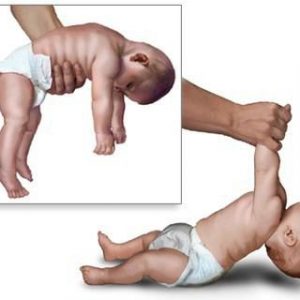One of the most common speech defects encountered by speech therapists, is dyslalia. It is a violation of the pronunciation of sounds in a healthy ear. Dyslalia especially often observed in pre-school children.
The types of dislalia
The term “dyslalia” translates from Latin as “speech”. Child dyslalia or do not pronounce a certain sound and passes it into words, or distorts or does it replace a different sound. How it looks really?
The transmission of sound can manifest itself in its loss at the beginning of words (for example, instead of “drawing” the kid says “isook”), in the middle of a word (“woona” instead of “the crow”) and end (“powa” instead of “cook”). The distortion is manifested by the fact that the baby is the right utters an unusual sound, which does not exist in the Russian language.
And sometimes the kid during a call, simply replace “uncomfortable” sound “comfortable” and it turns out instead of “I went” – “I.” or “fumocy” instead of “handbag”.

Speech pathologist distinguish between simple and complex dyslalia. For simple dyslalia violation inherent in the pronunciation of a single sound or a group of similar sounds (for example, a group of whistling sounds With, Z, TS). When the baby disturbed pronunciation of sounds of different groups, for example, whistling and hissing, doctors say about the complex dyslalia.
Generally distinguish between these types of phonetic groups:
- Sonora (R, L, M, N, Th);
- Whistling (A, H);
- Hissing (W, W, H, Y).

Often children incorrectly pronounced hissing sounds W, W, H, C whistling, W, C, and Sonora R, L Rarely observed violations of the pronunciation of such sounds as K, Kh, G, D, T, Th, F.
The reasons for dyslalia
Causes dyslalia much. If to speak in General terms, the problem can be related with structural features of dentoalveolar apparatus or mental development of the child and the influence of his inner circle. Depending on the reasons for speech therapists distinguish between mechanical and functional types of dyslalia.
Mechanical dyslalia connected with the structural features of articulatory apparatus of a baby (namely the tongue, lips, jaws). A very common cause of mechanical dyslalia, the child is tongue-tie or upper lip. A few less common cause of dyslalia is excessively large or small tongue, thick and tight lips.
Also not less important role in the formation of mechanical dyslalia play an overbite, small or widely spaced teeth, pathology of the upper palate.
It is worth noting that the defects of the structure of the speech apparatus may be not only innate, but acquired. For example, later weaning of the baby from the nipples may lead to the formation of malocclusion.

Reasons of development of functional dislalia are social and biological factors. So, dyslalia expected occurs in children with educational neglect when a child’s development, no one does. On the formation of speech of the baby significant influence of his environment. Children imitate the speech of adults. If parents or relatives have a speech impediment (tongue-tied or dialectal speech) baby can also adopt this kind of style of communication. By the way, for this reason, psychologists do not recommend “Lisp” with the kid, because such distorted speech is perceived by the child as a right, and because of this, can develop dyslalia.
It also affects the health of the child. So, dyslalia observed in weakened, sickly children, and in children with delay of mental development
Correction dyslalia
Dyslalia is a speech disorder, which is amenable to restoration. And if the parents to notice the problem in your child and will refer to speech therapy – a positive result will be guaranteed.

You first need to find out the cause of dyslalia. So, if there were existing problems with the bite or dentition – held dental correction. In addition, you may need to consult a neurologist.
If the baby physiological dyslalia, then proceeds to business speech therapist. The process of correction of speech takes place in several stages:
- The first phase is called preparatory. At this stage, the speech therapist puts before itself such tasks as development of baby’s auditory attention and memory. Also, the speech therapist spends with the child, preparatory articulation exercises to improve speech motor skills.
- The next stage is the formation of pronunciation skills. At this stage, the therapist works directly on fixing existing defects. With the help of special exercise specialist develops kid’s ability to distinguish between the pronunciation of sounds that are similar in pronunciation and sound.
- When these tasks are successfully completed, the therapist will be engaged in the formation of pronunciation skills in free speech baby.
Correction dyslalia is mainly in the form of a game. The speech therapist prompts the child to perform specific exercises that are designed to develop correct pronunciation of sounds.
To achieve the desired result of speech therapy classes should be held regularly, several times a week. To go beyond the lessons with a specialist is not necessary. Parents can ask the speech therapist to show you exercises that you then need to do with their child at home. The duration of treatment for simple dyslalia usually takes from one to three months, while complex dyslalia little longer – up to six months.




Can I just say what a relief to search out somebody who actually knows what theyre talking about on the internet. You definitely know how to deliver an issue to gentle and make it important. Extra individuals need to learn this and understand this facet of the story. I cant believe youre no more popular since you positively have the gift.
Thanks, I have just been searching for information approximately this subject for a while and yours is the greatest I have found out till now. However, what in regards to the bottom line? Are you sure concerning the source?
Perfect just what I was searching for! .
Pretty! This has been a really wonderful article. Thanks for providing these details.